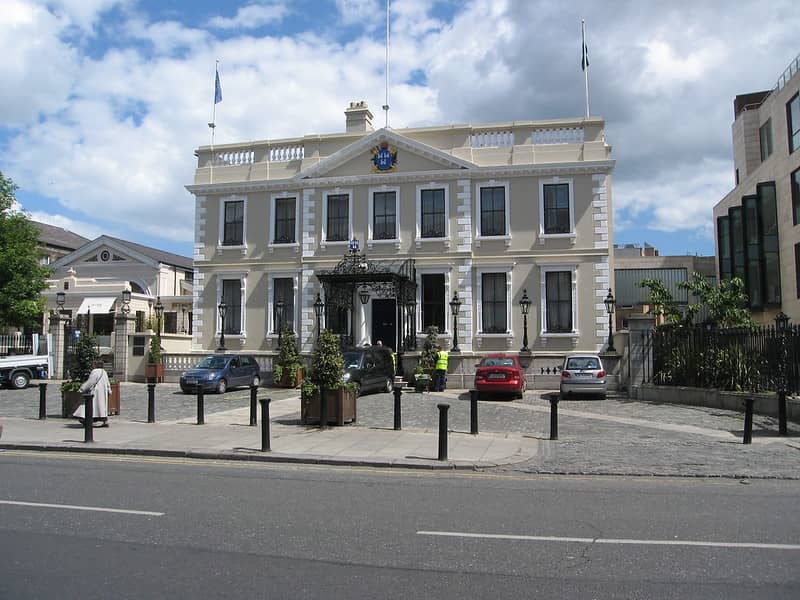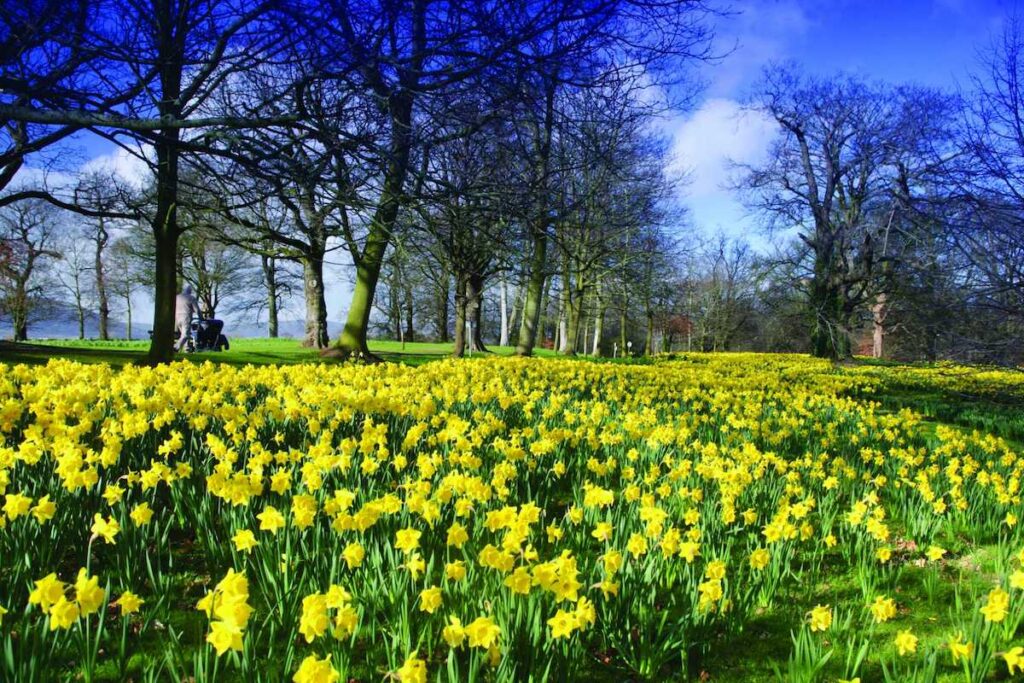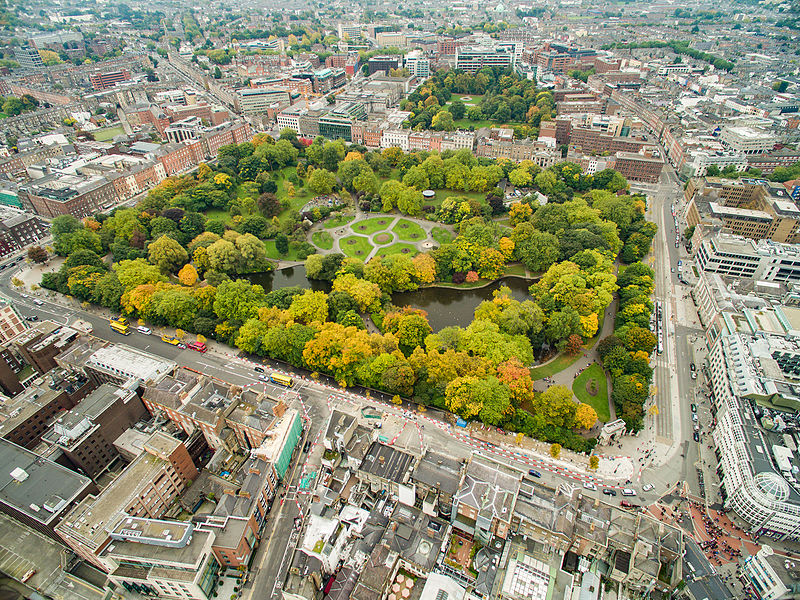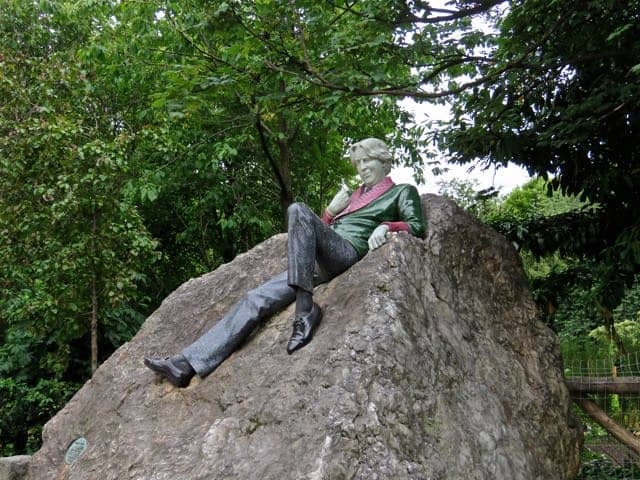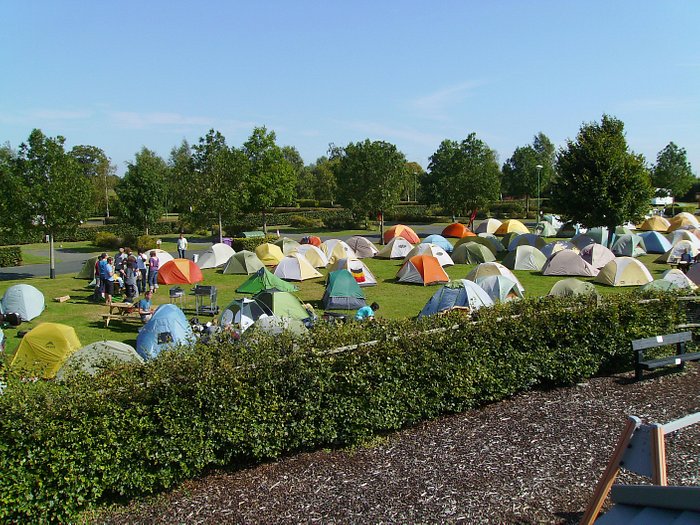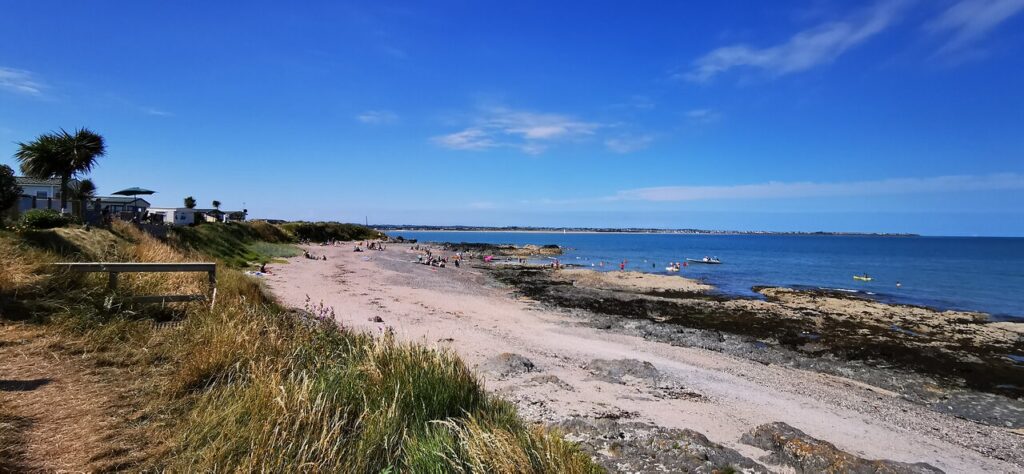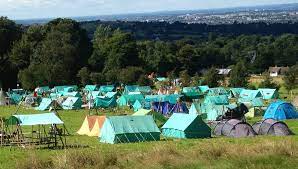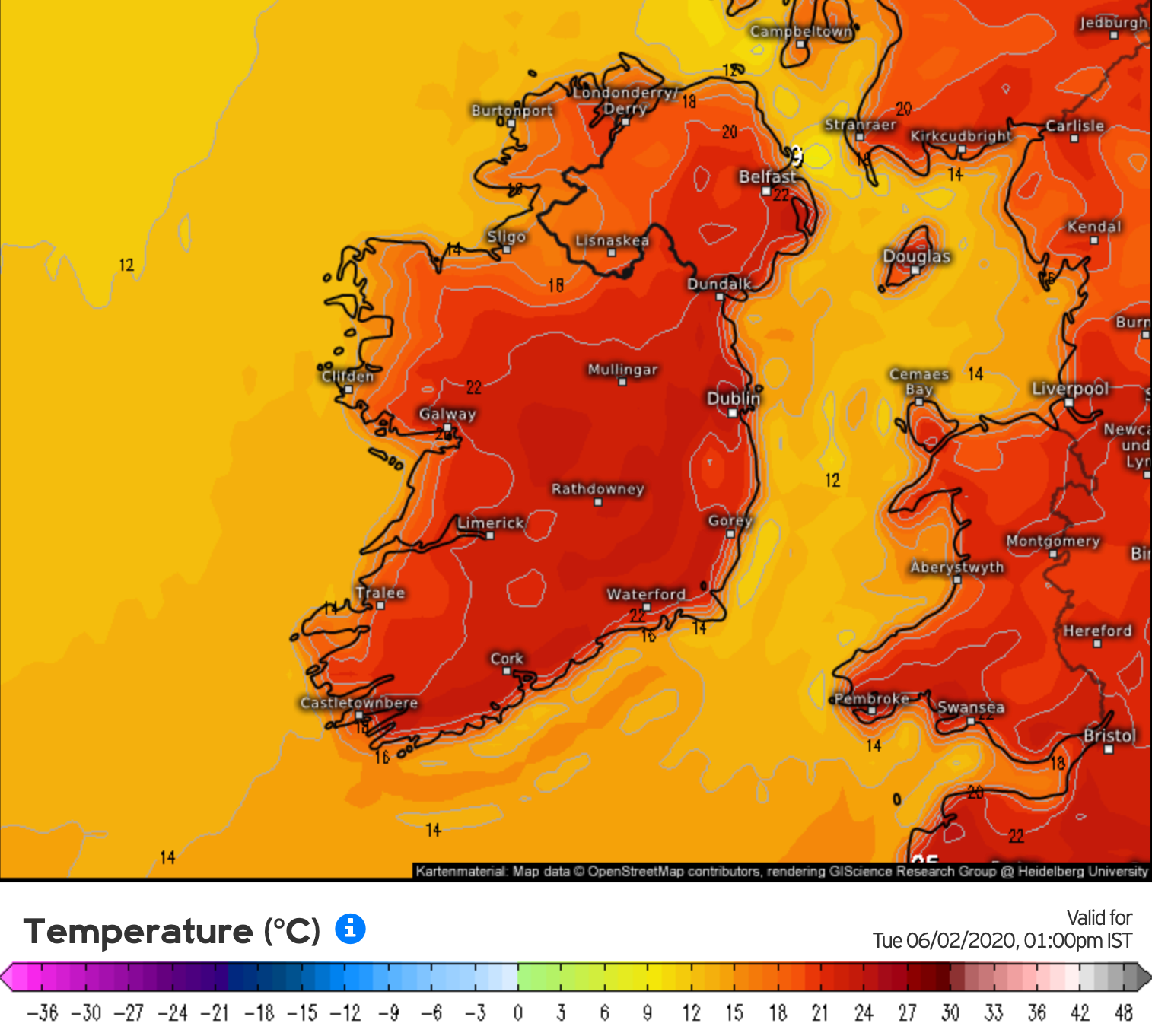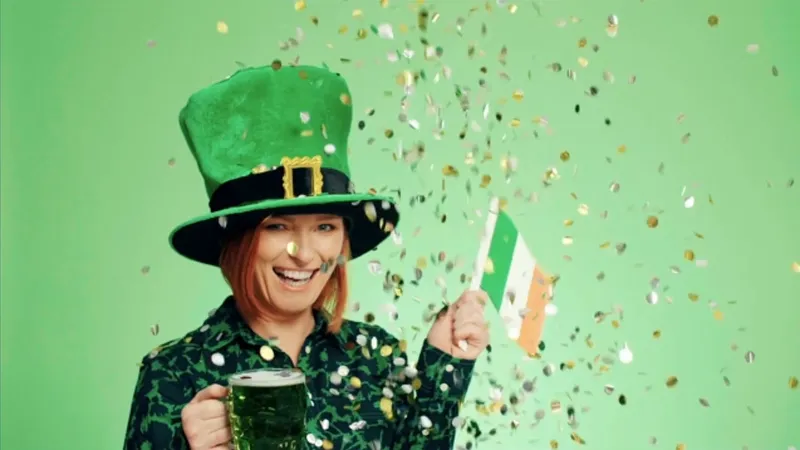Dublin’s museum scene is nothing if not diverse.
More than 100 museums and galleries are spread across the capital, allowing visitors to delve deep into the Irish psyche – real or imagined – and learn about Irish culture and history.
A city of writers and revellers, artists and emigrants, Dublin’s curators have a rich archive to draw from. Alongside many of the country’s most notable collections – the National Museum (for archaeology, decorative arts, military history and natural history), the National Gallery (for art) and the National Library (for rare books), many of Dublin’s best museums draw from esoteric inspiration.
Explore your Irish roots at EPIC, the Irish Emigration Museum. Travel back to the Viking era in Dublinia. Relive the complexities of the Easter Rising at the GPO on O’Connell St. Revel in literary brilliance at MoLI, Museum of Literature Ireland or sample a dram of whiskey at The Irish Whiskey Museum. Dublin’s museums are filled with thrilling treasures from Bronze Age gold to priceless international art.
The Science Gallery
The Science Gallery is a public science centre at Trinity College, Dublin. Opened in 2008 and housed in Trinity’s Naughton Institute, the city’s newest Gallery offers a refreshingly lively and informative exploration of the relationship between science, art and the world we live in.
The Museum features regularly changing exhibitions that are entertaining and informative and strike a balance between outlining some really remarkable facts and figures in a casual, highly visual and easily digestible way.
The exhibitions are led by friendly and well-informed guides who take you through the interactive, hands-on tour as you explore a new type of scientific venue where today’s white-hot scientific issues are thrashed out. You can have your say in one of Dublin’s most unique and informative tourist attractions.
Contact Details:
Address: The Science Gallery, Naughton Institute, Pearse Street, Trinity College, Dublin 2
Tel: +353 1 896 4091
Getting There:
Hop off the CityScape Tour at Stop 22 Dawson Street (see Route Map)
Archaeology Museum – The National Museum of Ireland
The National Museum of Ireland is dedicated to showcasing Irish Art, Culture and Natural History. The Archaeology Museum is the most impressive of the three branches of the Museum. It holds the best-known and most exciting exhibits featuring Ireland’s archaeological treasures.
The shows contain a mix of Europe’s finest collection of Bronze- and Iron-Age gold artefacts, the most complete collection of medieval Celtic metalwork in the world and vital and exciting items from Ireland’s fight for Independence.
The Treasury is the most prominent part of the collection. Its centrepieces are Ireland’s two most famous crafted artefacts, the Ardagh Chalice and the Tara Brooch. The 12th-century Ardagh Chalice is the finest example of Celtic art ever found.
At the same time, Tara Brooch is equally revered, having been crafted as a white bronze clasp around AD 700. Elsewhere in the Treasury is the exhibition Ór-Ireland’s Gold, which features stunning jewellery and decorative objects created by Celtic artisans in the Bronze and Iron Ages alongside a 15m log boat, which was abandoned and then pulled out almost perfectly preserved 4000 years later, from a peat bog.
On the same level is the fascinating Road to Independence exhibition, which features the army coat worn by Michael Collins on the day he was assassinated and the cap purportedly worn by Collins on that fateful day, complete with a bullet hole in its side. However, the authenticity of the hat is contested.
Suppose you can handle even more history upstairs. In that case, you will find Medieval Ireland 1150 – 1550 and Viking Age Ireland exhibits alongside the aptly named Clothes from Bogs in Ireland exhibit.
Fun Fact
The Ardagh Chalice was not discovered by archaeologists but by a farmer digging for spuds in his field. Once again, deepening the inherent love for potatoes in Ireland!
Contact Details:
Address: Kildare Street, Dublin 2
Tel: +353 (0)1 6777444
Getting There:
Hop off the CityScape Tour at Stop 22 Dawson Street (see Route Map)
Collins Barracks
One of the most exciting and informative things to do in Dublin, the National Museum of Ireland is a must-see. Originally the oldest army barracks in Europe, the buildings were re-opened in 1997 with a new purpose as the National Museum of Ireland – Decorative Arts and History.
The barracks and central square are named after Michael Collins, the first Commander-in-Chief of the Irish Free State Army, who was killed at Béal na Bláth, Co. Cork, four months before the barracks were surrendered to the Free State Army. General Richard Mulcahy formally accepted the handover and immediately named the site after Collins.
At Collins Barracks, there are so many things to see and do. Irish haute couture garments, furniture, silver, jewellery, ceramics, and detailed exhibitions exploring Irish military history from 1550 to the 21st century, including an exciting and informative exhibition detailing the events leading up to, during and after the 1916 Easter Rising.
In the Museum, you will also find one of the largest collections of silver in the world (unfortunately, you can’t take any) as well as exhibitions showing the development of fashion in Ireland from the 1700s onward and Dublin’s very own Asian Art collection.
Contact Details:
Address: Collins Barracks, Benburb Street, Dublin 7
Tel: +353 1 6777444
Getting There:
Hop off the CityScape Tour at Stop 5 Wolfe Tone Quay (see Route Map)
Admission:
Free
Richmond Barracks
The fallout of the Easter Rising didn’t all happen at Kilmainham Gaol. In the nearby neighbourhood of Inchicore, over 3,000 rebels—men and women—were held at Richmond Barracks, a British military base being used at the time as a training centre for Irish-born soldiers shipping off to fight in World War I.
In the crowded barracks, the Rising leaders—including the 14 later executed at Kilmainham—were separated from rank-and-file rebels, court-martialed, and sentenced on the spot.
Then, from Richmond Barracks, they were marched through the streets to Kilmainham Gaol, where crowds of angry locals jeered and spit at them—the Rising wasn’t initially popular, as more civilians were killed in the fighting than Irish rebels and British soldiers combined.
The barracks sat long unused and crumbling until community interest and funding came through during the 1916 Centenary celebrations.
In May 2016, it opened to the public as a museum remembering its days as a British base of operations, an impromptu processing centre for the men and women of the Rising, its handover from the British to the Irish armies after Independence, and its final chapter as government tenement housing and a Christian Brothers school.
The tour will include the 1916 exhibit in the gymnasium, where those arrested after the Rising were processed and sentenced; a re-creation of one of the classrooms from its time as a school (with a fine collection of original furniture found in storerooms and donated by families); and an example of the living quarters for the soldiers—and later, the families—who called the barracks home.
Those who go for the guided tour (recommended) rather than the self-guided tour will take a guided walk through Goldenbridge Cemetery nearby.
Many vandalised and weatherworn markers have been restored thanks to an extensive renovation alongside Richmond Barracks.
If time and budget allow, a tour of Richmond Barracks would pair well with a visit to Kilmainham Gaol; you could follow in the footsteps of the executed Rising leaders from the Barracks to the old Garrison Church—still a functioning Catholic church—to Kilmainham Gaol and then across the river to their burial site in Arbour Hill Cemetery. Look for more developments in future updates of this book and on their website
Contact Details:
www.richmondbarracks.ie
Admission:
Adult – €8.50
Children (under 12) – €2.50
Student/Senior citizen – €3.50
Getting There:
Hop off the CityScape Tour at Stop 24 Lord Edward’s Street (see Route Map)
Dublin Castle
Originally built in the 13th century on a site previously settled by the Vikings, Dublin Castle had functioned as a military fortress, a prison, a Treasury, a court of law and the seat of English Administration in Ireland for 700 years until it was finally handed over to the new Government of the Irish Free State in 1922. Dublin Castle is now a major governmental complex used for critical State receptions and Presidential Inaugurations.
Dublin Castle was built in 1204 as a defensive fortification on the orders of King John of England sometime after the Norman Invasion of Ireland in 1169. It later evolved into a royal residence, resided in by the Lord Lieutenant of Ireland or Viceroy of Ireland, the representative of the monarch and would serve as the seat of British rule in Ireland for over 700 years up until the establishment of the Irish Free State in 1922.
Following the War of Independence and the signing of the Anglo-Irish Treaty 1921, the rebel military commander Michael Collins arrived in the Upper Yard of Dublin Castle on 16th January 1922 and received the handover of the Castle, from the last Lord Lieutenant FitzAlan, on behalf of the new Irish Government.
The State Apartments, Undercroft, Chapel Royal, Craft Shop, Heritage Centre and Restaurant are open to visitors. Admission is by guided tour with a self-guiding option available.
Fun fact
Dublin Castle has appeared in numerous films, including Barry Lyndon, Michael Collins, Becoming Jane and The Medallion, and the television series The Tudors, where it doubles as the Vatican in the pilot.
Contact Details:
Address: Dublin Castle, Dame Street, Dublin 2
Tel: +353 (0)1 645 8813
Admission:
Adult – €4.50
Children (under 12) – €2.00
Student/Senior citizen – €3.50
Getting There:
Hop off the CityScape Tour at Stop 24 Lord Edward’s Street (see Route Map)
National History Museum – The National Museum of Ireland
One of the three branches of the National Museum of Ireland, the Natural History Museum is located between Government Buildings and the House of the Oireachtas on Merrion Street. First opened in 1857, the Museum has been virtually unchanged since its opening, bar some restoration work in 1909 and 2007 after the grand stone staircase was deemed unsafe.
The Victorian-style Museum is home to a fascinating collection of over 2 million species situated in a building full of old Victorian charm and scientific wonderment.
The ground floor is dedicated to Irish wildlife featuring the mammals, sea creatures, birds and some butterflies that could have been found in Ireland at some point, with the centrepiece being the skeleton of the now-extinct giant Irish elk.
The upper floors of the building feature the World Animals Collection, which is dedicated to animals found worldwide. There you will find an exhibition that jumps from continent to continent and includes outstanding examples of animals found throughout the history and far reaches of the world.
The Museum has no admission charge, and visitors are welcome to explore the collections by themselves at their own pace. The Museum of Natural History is one of the top things to do in Dublin for any history buffs or anyone looking to see Dublin on a budget.
Fun Fact
Some of the large exhibits face away from the entrance. This is due to a new entry being constructed at the east end of the building facing Merrion Street in 1909. This reversed the direction from which visitors approached the exhibitions and explained why some of the large exhibits still faced away from the entrance; it was too difficult to turn the whales and elephants around to meet the new entry.
Contact Details:
National History Museum, Merrion St Upper, Dublin 2
Tel: +353 (0) 1 677 7444
Getting There:
Hop off the CityScape Tour at Stop 20 Merrion Street (see Route Map)
National Gallery of Ireland
The National Gallery of Ireland is a must-see for any visiting Dublin art lovers. Situated in Merrion Square near the National Museum at Kildare Street, the Gallery is an underrated attraction that is not to be missed. The Gallery boasts a collection of more than 2 500 paintings and over 10 000 other artworks, including watercolours, drawings, prints and sculptures.
Founded in 1854 by an Act of Parliament and opened to the public in 1864, the Gallery houses the nation’s collection of Irish and European fine art, spanning the period circa the 1400s to 1950s. The National Gallery is unique thanks to its collection of exhibitions which documents the story of Irish art from the seventeenth century to the present day with critical works by Nathaniel Hone, John Lavery, William Leech, Roderic O’Conor, Paul Henry, Sean Keating, Jack B. Yeats and Louis le Brocquy.
The Gallery is also home to several of Europe’s most renowned masterpieces, including works by Fra Angelico, Rembrandt, Poussin, Goya, Picasso, Bonnard, Van Gogh and a recently discovered Caravaggio.
Free permanent collection tours take place every Saturday at 12.30 pm and every Sunday at 12.30 pm and 1.30 pm. Guided tours of the collection may be booked for private groups, schools and university groups, special interest groups and individuals. A minimum of 2 weeks’ notice and a small fee are required.
Fun Fact
Caravaggio’s ‘The Taking of Christ, a painting recorded in contemporary biographies on the artist but long believed to be lost or destroyed, was discovered in a Jesuit house of studies in Dublin. The picture remains in the Gallery on indefinite loan from the Jesuit fathers.
Contact Details:
Address: Merrion Square West & Clare Street, Dublin 2
Tel: +353(0)16325133
Getting There:
Hop off the CityScape Tour at Stop 19 Merrion Square West(see Route Map)
Kilmainham Gaol
Kilmainham Gaol is one of the largest unoccupied jails in Europe. Now turned into a museum, the gaol has witnessed some of the most heroic and tragic events in Ireland’s emergence as a modern nation from the 1780s to the 1920s, with many of the leaders of Irish rebellions imprisoned within its walls.
Dublin’s Kilmainham Gaol is in the heart of modern Irish history and has held some of the most famous political and military leaders in Irish history, such as Robert Emmet, Charles Stewart Parnell, the 1916 Rising leaders and Eamon de Valera. From when it opened in 1796 to when it closed in 1924, the leaders of 5 Irish rebellions between 1798 and 1916 were detained and, in some cases, executed in gaol.
Attractions include a major exhibition detailing the political and penal history of the prison and its restoration. The tour of the prison includes an audio-visual show which gives the visitor a dramatic and realistic insight into what it was like to have been confined in one of these forbidding bastions of punishment and correction.
For anyone visiting Dublin, this is one of the must-see attractions if you are either interested in learning about the infamous gaol, which has played a prominent role in Irish history or if you would like to experience what it was like to be put in an almost 300-year-old prison without the generally less pleasant experience of having to actually be incarcerated.
Fun Fact
Kilmainham Gaol has a history of being haunted, with several reported ghost sightings over the last century.
Contact Details:
Address: Inchicore Road, Kilmainham, Dublin 8.
Tel: +353 1 453 5984
Getting There:
Hop off the CityScape Tour at Stop 28 Military Road (see Route Map)
Admission:
Adult – €6.00
Senior/ Group – €4.00
Child/ Student – €2.00
Family – €14.00
Irish Museum of Modern Art
The Irish Museum of Modern Art, or “IMMA”, is Ireland’s leading national institution for collecting and presenting modern and contemporary art. Attracting over 400,000 visitors a year, the Museum is Ireland’s most important collection of modern and contemporary Irish art. It is housed in the elegant Royal Hospital at Kilmainham, recognised as the finest 17th Century building in Ireland.
The Royal Hospital Kilmainham was designed by the talented William Robinson (who also designed Marsh’s Library) and was built between 1680 and 1687 as a home for retired soldiers. It continued in that use until 1928. The building was then left to languish for over 50 years. The Government eventually restored the building in 1984 and made it into the popular tourist attraction it was today in 1991.
The Museum presents a wonderfully wide-ranging combination of old and new exhibitions, which regularly include works from contemporary Irish artists such as Louis Le Brocquy, Sean Scully, Barry Flanagan, Kathy Pendergrass and Dorothy Cross, as well as paintings from artistic giants Pablo Picasso and Joan Miró.
Contact Details:
Address: Royal Hospital, Military Road, Kilmainham, Dublin 8
Tel: +353-1-6129900
Tours:
Tue-Sun: 2.30 pm
Admission:
Tue & Thu-Sat: 10 am-5.30 pm
Wed: 10.30 am-5.30 pm
Sun: 12 pm – 5.30 pm
Getting There:
Hop off the CityScape Tour at Stop 28 Military Road (see Route Map)
EPIC The Irish Emigration Museum
EPIC The Irish Emigration Museum is a state-of-the-art interactive experience located in the beautiful vaults of the 1820 Custom House Quarter building in Dublin’s Docklands, the original departure point for many of Ireland’s emigrants. It will inspire and guide you on a journey to discover the stories of Irish emigration around the world, from early times to the modern day.
Over the centuries, some 10 million people have left the island of Ireland. At EPIC, you can step through 20 themed galleries to discover why people left, see how they influenced the world they found, and experience the connection between their descendants and Ireland today.
Immerse yourself in the stories of some of the most remarkable tales of sacrifice, endurance, adventure, and discovery the world has ever known. EPIC brings these amazing stories to life uniquely and spectacularly.
Contact Details:
Address: The CHQ Building, Custom House Quay, Dublin 1
Tel: +353(0)1 906 0861
Web: epicirelandchq.com
Getting There:
Hop off the CityScape Tour at Stop 11 Custom House Quay(see Route Map)
Dublinia
Dublinia is a heritage centre in the heart of Dublin City. Located at the crossroads of St Michael’s Hill, Patrick St, and High Street, Dublinia is fast becoming one of the top attractions in Dublin, with almost 125 000 visitors a year. There are three exciting and interactive exhibitions to be seen at Dublinia.
The first is ‘Viking Dublin’, which takes the visitor back to life in the city in Viking times. Here you will see what life was like on board a Viking warship. You will visit a Viking house, stroll down a Viking street and even try on Viking clothes!
The second exhibition is ‘Medieval Dublin’, where you learn about warfare, crime and punishment, death and disease and even medical remedies of 700 years ago. See the city as it would have looked then in a display featuring a busy medieval market, a wealthy merchant’s house and a noisy medieval street.
The third and final exhibition is the ‘History hunters’. In this exhibition, you will see genuine Viking and Medieval artefacts, including those of a medieval skeleton found in Dublin. The collection even includes an excavation site and a lab to discover more and test your newfound archaeology skills.
A visit to Dublinia is a must-see to learn all about Dublin’s long and colourful history and is a fun day out for visitors of all ages.
Contact Details:
Address: St Michael’s Hill, Christ Church, Dublin 8, Ireland
Tel: +353 (0)1 6794611
Getting There:
Hop off the CityScape Tour at Stop 25 Christ Church Place (see Route Map)

